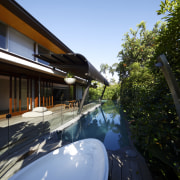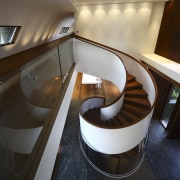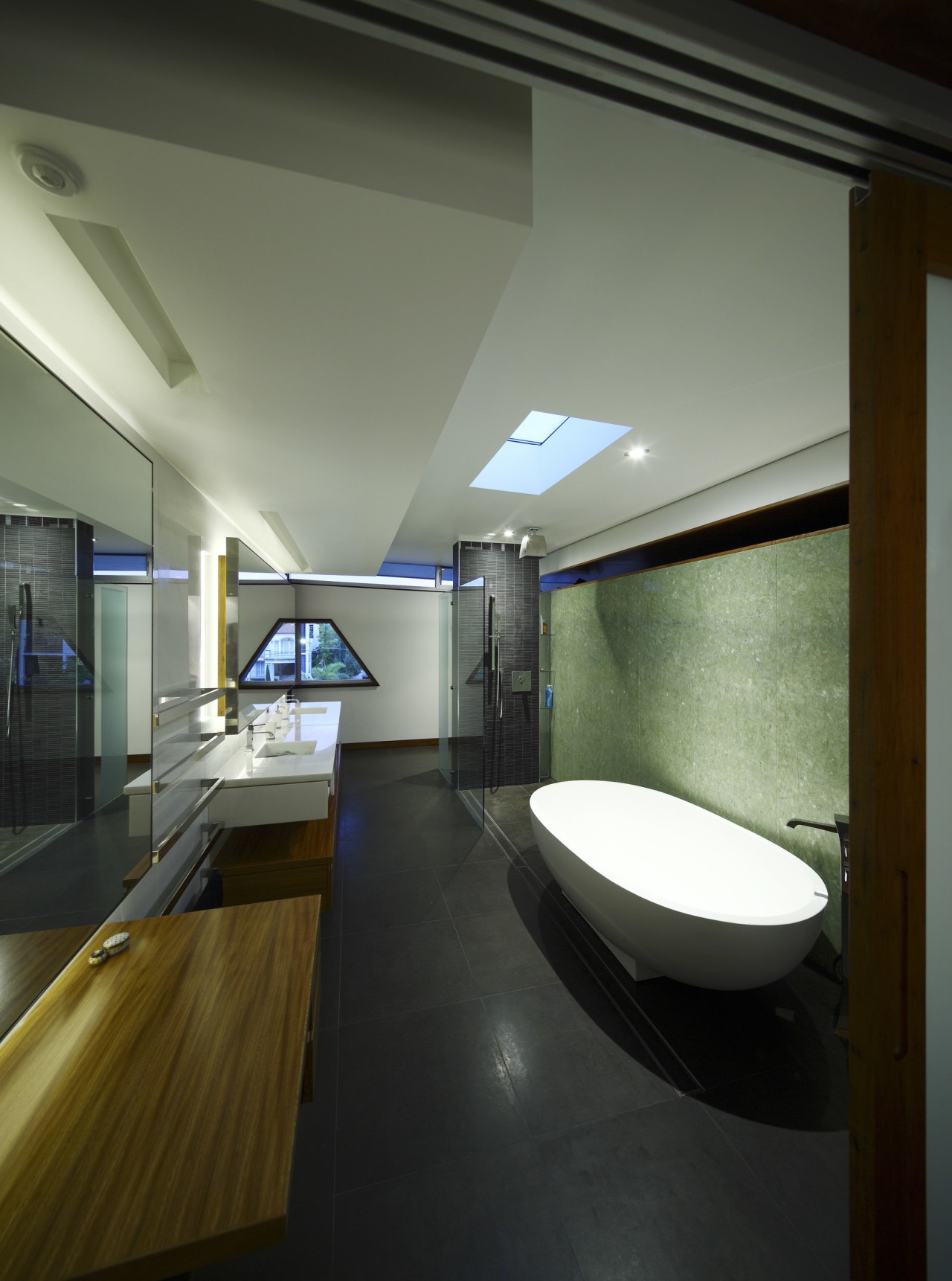Self expression
With its dramatic extruded roof form and contemporary veranda treatment, this new house offers a modern interpretation of the traditional Queenslander
Designing a modern house in a street classed as a character residential area doesn't have to be restrictive. This Brisbane property is in such an area. But architect Andrew Gutteridge of Arkhefield says in this instance the category covers a broad spectrum of styles.
"The street runs alongside the river, making it a desirable address. The architectural styles, however, range from Tuscan to Tudor, with a few traditional Queenslanders," he says. "As the character of the area has already changed significantly, we were able to loosely interpret the idea of a traditional Queenslander. A modern architectural response was also a significant part of the clients' brief."
To this end, the architect introduced familiar materials and typologies, but abstracted these to provide a much more contemporary expression of a traditional Queenslander.
Like these original houses, the roof extends to provide shelter to screened verandas, and the house is raised so it appears to sit on a light base.
"The site is long and thin, with the primary outlook to the northeast," Gutteridge says. "By extruding the roof form to wrap down one entire side of the house, we could shut down the house on that side and open it up to the northeast on the opposite side. The design lets the sun into the house in winter, but keeps it out in summer."
At the front of the house, a concrete wall and timber batten screen echo the sectional form of the extruded roof.
"This solid wall creates a sense of protection the family living room is shielded and cloaked," says Gutteridge. "At the same time, the louvred veranda wraps three sides of the room, providing filtered light and allowing the space to engage with the street. The screening also helps to visually soften the forms."
Gutteridge says the roof is not only a prime organising element on the exterior it also informs on the interior.
"The interior has been kept deliberately simple and uncluttered to ensure the form of the roof is legible," he says. "The spaces are arranged to provide a linear progression through the house, starting with the more private and contained rooms as a filter to the street, then moving into the more open and family-oriented spaces."
Throughout the house, the slope of the roof impacts on the walls, creating a look that is reminiscent of a yacht interior. On the upper level the sloping walls form a corridor that becomes a walk-in dressing room in the master suite.
On the ground floor, the slope is accommodated by a long, white benchtop that becomes an ordering element. The bench runs the length of the kitchen and reappears in the formal dining area where it forms a sideboard.
The shape of the extruded roofing section also appears in the dining room, which is positioned beneath a recessed part of the roof. The semi-cantilevered concrete floor slab appears to turn and wrap up the side of the room, forming the exterior wall.
"When you are sitting in the dining room, or at the kitchen island, the sloping wall makes for a very contained space, even though these are spacious, open-plan areas that open to the outdoors," says the architect.
To retain a sleek look, there are no overhead cabinets in the kitchen. The pantry is within a semi-enclosed room, which features polished plaster walls that mimic the extruded section of the roof.
"The pantry is one of three separate sculptural objects designed to look as though they have been dropped into the open living space," says Gutteridge. "The other objects are the kitchen island, which has a long, steel-framed, cantilevered top, and the circular stairs. These were made from a single piece of curved steel that is self supporting."
The formal living area is set four steps down from the family living space its shape again defined by the roof. On one side, the room soars to a double-height volume, and is open to a mezzanine area on the floor above. This features timber batten balustrading that echoes the timber screening at the front of the house.
Reinforcing the link with the outdoors, the concrete wall that wraps the rear of the house is exposed on the inside.
"All the spaces have a simple and direct engagement with the pool, deck and garden, which form the focus of the house," says Gutteridge.
In designing the house, the architect also retained a reference to the original house on site. The laundry juts out from the main volume, just like the former laundry, which was in a lean-to in the same position.
Story by: Trendsideas
Home kitchen bathroom commercial design
















